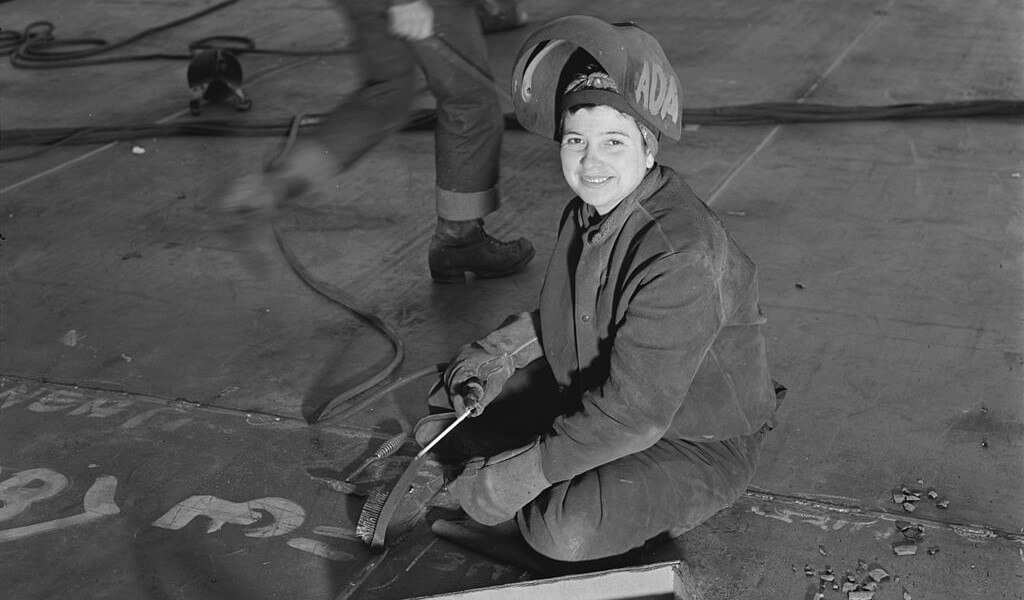The ongoing skills gap continues to present many interesting challenges for industries actively looking to fill skilled positions. A viable solution is to hire more women in trades where the skills gap has impacted the workforce the most: construction, welding, electrical, plumbing, and carpentry, to name a few. Women currently make up half of the U.S. workforce, but they only account for 8.9% of skilled trade jobs. While this solution may seem straightforward, it is not simply a matter of “hiring more women.” If we are to close the skills gap, we must change the perception of skilled trades in America and provide education and resources to all who are looking to enter a skilled trade.
At Nocti Business Solutions, we provide skills assessments and a variety of educational resources that help companies build stronger, more efficient workforces. While there are many, many reasons for women to pursue careers in the skilled trades, here are four areas we feel are particularly relevant for those looking to start a career in the skilled trades.
1. Current Labor Shortage
The current labor shortage makes this an excellent time for women to pursue careers that have historically been filled by men. The U.S. Department of Labor estimates that more than 6.5 million jobs are unfilled because employers are unable to find workers with the necessary skills. While this shortage is concerning and will have a negative long-term impact, it also presents an opportunity for women (and others) to start a career in the skilled trades. Just a few of the jobs in high demand are:
- Carpenters
- Construction workers
- Electricians
- HVAC installers
- Plumbers
- Welders
2. Affordable Education
A second reason for women to consider a career in the skilled trades is the difference in education costs. The price of a traditional college education makes it difficult for many people to earn a four-year degree. The price of a college degree has risen by 213% since 1988, and the average cost of a four-year degree ranges anywhere from $40,000 at an in-state community college to $147,000 at a private college.
While a traditional college education is certainly worthwhile, it is important to recognize that it is not the only path to a successful career. In contrast, the average tuition for a trade school is $33,000. That is less than a full year of tuition at some private universities. What’s more, trade schools allow you to complete your education in less time and with more on-the-job experience. Many trade schools help students find employment after graduation and provide valuable insight into their specific industries. Trade schools present a more affordable education option for many women, and hold the promise of reliable employment and a rewarding career.
3. Well-Paying Careers
In addition to affordable education, skilled trade jobs pay well. There are also many opportunities for advancement and most positions offer benefits including health-care, paid time-off, and retirement plans.
Here is a brief list of in-demand jobs, the average yearly salary, the percent of women currently in the trade, and the expected rate of growth of the overall trade for the next ten years (information taken from the U.S. Department of Labor’s Occupational Outlook Handbook).
- Construction Laborers
- Salary: $34k to $62k
- Women employed: 1.2 %
- Job growth: 11% (higher than average)
- Welders
- Salary: $41k to $63k
- Women employed: 4.8%
- Job growth: 3%
- Carpenters
- Salary: $46k to $76k
- Women employed: 1.7%
- Job growth: 8% (higher than average)
- HVAC Installers
- Salary: $47k to $76k
- Women employed: 1.2%
- Job growth: 13% (much higher than average)
- Plumbers
- Salary: $53k to $90k
- Women employed: 1.6%
- Job growth: 14% (much higher than average)
- Electricians
- Salary: $55k to $94k
- Women employed: 2.4%
- Job growth: 10% (higher than average)
Skilled trade careers look especially appealing when compared to roles traditionally filled by women:
- Childcare
- Salary: $23k
- Outlook: 2% (slower than average)
- General Office Clerks
- Salary: $32k
- Outlook: -4%
- Bookkeeping
- Salary: $40k
- Outlook: -4%
4. Technology and Innovation
Finally, skilled trades offer women an engaging and exciting career full of new technology and innovation. However, despite exciting new advances in technology and near-constant innovation, a surprising number of people think that the day-to-day responsibilities of a skilled trade worker are unimaginative and dull.
Skilled labor positions are fast-paced and require critical thinking and creative problem-solving skills. Many of these industries (like manufacturing and construction) are responsible for pioneering and implementing new technology. This includes (but is not limited to):
Close the Skills Gap with NBS
There are many more reasons for women to pursue non-traditional careers. The four points listed above serve as a way to start conversations and present facts to help alter the negative connotations of the skilled trades. At Nocti Business Solutions, we are dedicated to helping companies of all sizes build stronger and more sustainable workforces. The current skills gap is calling for creative solutions. We must all do our part to educate women (along with everyone else) about the many opportunities presented by the skilled trades.

Recent Comments